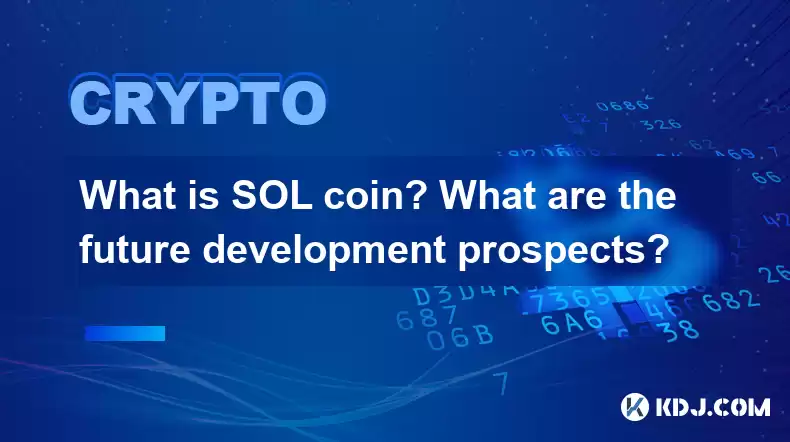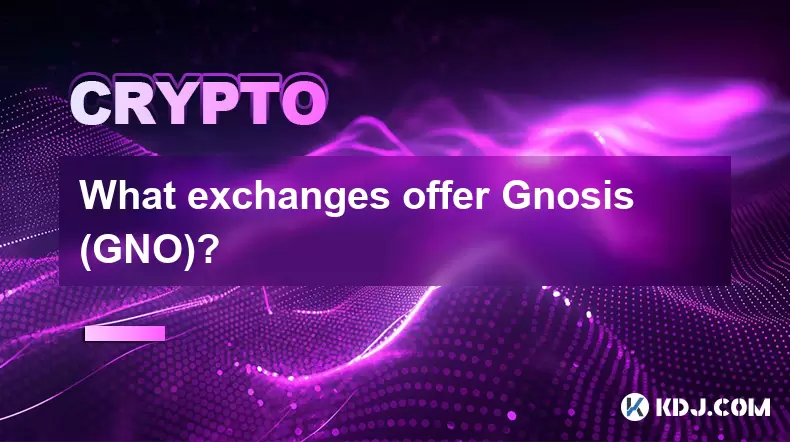-
 Bitcoin
Bitcoin $118600
-2.59% -
 Ethereum
Ethereum $4282
-0.42% -
 XRP
XRP $3.129
-4.21% -
 Tether USDt
Tether USDt $0.0000
0.01% -
 BNB
BNB $805.4
-1.80% -
 Solana
Solana $174.3
-5.77% -
 USDC
USDC $0.9998
-0.01% -
 Dogecoin
Dogecoin $0.2230
-6.33% -
 TRON
TRON $0.3466
1.70% -
 Cardano
Cardano $0.7745
-5.73% -
 Chainlink
Chainlink $21.37
-3.53% -
 Hyperliquid
Hyperliquid $42.93
-7.25% -
 Stellar
Stellar $0.4324
-4.94% -
 Sui
Sui $3.660
-7.17% -
 Bitcoin Cash
Bitcoin Cash $591.6
2.72% -
 Hedera
Hedera $0.2467
-7.04% -
 Ethena USDe
Ethena USDe $1.001
0.00% -
 Avalanche
Avalanche $22.92
-6.14% -
 Litecoin
Litecoin $118.8
-3.79% -
 Toncoin
Toncoin $3.378
-0.46% -
 UNUS SED LEO
UNUS SED LEO $9.011
-1.15% -
 Shiba Inu
Shiba Inu $0.00001294
-5.81% -
 Uniswap
Uniswap $11.24
0.53% -
 Polkadot
Polkadot $3.870
-6.16% -
 Cronos
Cronos $0.1662
-1.68% -
 Dai
Dai $1.000
0.02% -
 Ethena
Ethena $0.7915
-5.62% -
 Bitget Token
Bitget Token $4.414
-1.65% -
 Monero
Monero $259.3
-3.85% -
 Pepe
Pepe $0.00001120
-8.29%
What is SOL coin? What are the future development prospects?
SOL, Solana's native token, powers its high-speed blockchain via Proof-of-History, but faces uncertainty from competition, regulation, and past network issues.
Mar 10, 2025 at 10:25 pm

Key Points:
- SOL is the native token of the Solana blockchain, a high-performance layer-1 blockchain designed for decentralized applications (dApps).
- Solana's innovative consensus mechanism, Proof-of-History (PoH), allows for significantly faster transaction speeds compared to other blockchains like Ethereum.
- The future prospects of SOL depend on several factors, including network adoption, technological advancements, competition from other layer-1 blockchains, and regulatory developments. These factors are inherently uncertain.
- While Solana boasts impressive speed and scalability, it has also faced network outages and criticism regarding its centralization concerns.
What is SOL Coin?
SOL is the native cryptocurrency of the Solana blockchain. It fuels the network's operations, allowing users to pay for transaction fees, participate in governance, and stake their tokens to secure the network. Unlike Bitcoin which relies solely on its value as a store of value and medium of exchange, SOL has a more multifaceted role within the Solana ecosystem. Its utility extends beyond simply being a digital currency; it's integral to the functioning and development of the entire platform.
Solana's architecture differs from other prominent blockchains. It utilizes a unique consensus mechanism called Proof-of-History (PoH), which significantly enhances transaction throughput and reduces latency. This is a key differentiator from blockchains like Bitcoin and Ethereum, which rely on Proof-of-Work (PoW) and Proof-of-Stake (PoS) respectively. PoH essentially timestamps transactions before they're added to the blockchain, creating a verifiable history of events.
The Solana ecosystem is thriving with a rapidly expanding array of decentralized applications (dApps) built on its platform. These dApps cover a wide range of functionalities, from decentralized finance (DeFi) applications to non-fungible token (NFT) marketplaces and gaming platforms. The success and growth of these dApps directly impact the demand and value of SOL.
The SOL token itself is used to pay for transaction fees on the Solana network. The higher the network activity, the more SOL is required to facilitate transactions, impacting its price. Additionally, SOL holders can participate in the Solana network's governance, influencing future development and upgrades to the protocol. Staking SOL allows users to secure the network and earn rewards.
What are the Future Development Prospects of SOL?
Predicting the future price and success of any cryptocurrency, including SOL, is inherently speculative. However, several factors can contribute to its future development prospects. The continued adoption of Solana by developers and users is crucial. The more dApps built on Solana and the larger the user base, the more valuable the network becomes.
Solana's technological advancements are also key. Future upgrades and improvements to the blockchain's scalability, security, and functionality will be vital for maintaining its competitiveness in the rapidly evolving cryptocurrency landscape. The team behind Solana continuously works on improving its performance and addressing any vulnerabilities.
Competition from other layer-1 blockchains poses a significant challenge. Several other platforms offer similar functionalities and compete for developers and users. Solana needs to differentiate itself and maintain its advantages to attract and retain its community.
Regulatory developments will also play a crucial role. The increasing regulatory scrutiny of the cryptocurrency market globally could significantly impact the price and adoption of SOL. Clearer and more favorable regulations could boost its growth, while overly restrictive rules could hinder it.
The integration of innovative technologies, such as advancements in scalability solutions, will be critical to Solana's long-term viability. The ability to handle increasing transaction volumes without compromising speed or efficiency will be paramount. This is especially important as the demand for decentralized applications continues to grow.
Common Questions and Answers:
Q: Is Solana centralized?
A: Solana has faced criticism regarding its degree of centralization. While it employs a Proof-of-Stake consensus mechanism, a relatively small number of validators control a significant portion of the network's stake, raising concerns about its decentralization.
Q: What are the risks associated with investing in SOL?
A: Investing in SOL, like any cryptocurrency, carries significant risk. Price volatility, regulatory uncertainty, and technological vulnerabilities are all potential factors that could negatively impact its value. Thorough research and risk assessment are essential before investing.
Q: How can I buy SOL?
A: SOL can be purchased on various cryptocurrency exchanges. However, it's crucial to choose reputable and secure exchanges to protect your investment. Always verify the legitimacy of the exchange before making a purchase.
Q: What is Proof-of-History (PoH)?
A: Proof-of-History (PoH) is Solana's unique consensus mechanism. It uses cryptographic timestamps to create a verifiable history of events, allowing for significantly faster transaction processing compared to traditional consensus mechanisms.
Q: How does staking SOL work?
A: Staking SOL involves locking up your tokens to help secure the Solana network. In return, you earn rewards in the form of additional SOL. The amount of reward varies depending on the validator you choose to stake with. However, it's important to research validators before committing your funds.
Q: What are some of the key competitors to Solana?
A: Solana faces competition from other layer-1 blockchains such as Ethereum, Avalanche, Cardano, and Polkadot, among others. Each platform offers unique features and advantages, leading to a competitive landscape.
Disclaimer:info@kdj.com
The information provided is not trading advice. kdj.com does not assume any responsibility for any investments made based on the information provided in this article. Cryptocurrencies are highly volatile and it is highly recommended that you invest with caution after thorough research!
If you believe that the content used on this website infringes your copyright, please contact us immediately (info@kdj.com) and we will delete it promptly.
- Dogecoin, Presale, Surge: Riding the Meme Coin Wave
- 2025-08-12 11:10:12
- Dogecoin, Tron, and the ROI Reality Check: What's a Crypto Investor to Do?
- 2025-08-12 11:15:12
- Ethereum Layer-2 Scaling Competition Heats Up as ETH Breaks $4K
- 2025-08-12 10:30:12
- China Regulation, Stablecoins, and BNB Presale: Navigating the Crypto Landscape
- 2025-08-12 11:30:12
- Meme Coins, Investment, and Token Burns: What's Hot in 2025?
- 2025-08-12 10:30:12
- China's National Security Alarm Bells Ring Over Worldcoin's Iris Scans
- 2025-08-12 11:35:12
Related knowledge

How to purchase Aragon (ANT)?
Aug 09,2025 at 11:56pm
Understanding Aragon (ANT) and Its PurposeAragon (ANT) is a decentralized governance token that powers the Aragon Network, a platform built on the Eth...

Where to trade Band Protocol (BAND)?
Aug 10,2025 at 11:36pm
Understanding the Role of Private Keys in Cryptocurrency WalletsIn the world of cryptocurrency, a private key is one of the most critical components o...

What is the most secure way to buy Ocean Protocol (OCEAN)?
Aug 10,2025 at 01:01pm
Understanding Ocean Protocol (OCEAN) and Its EcosystemOcean Protocol (OCEAN) is a decentralized data exchange platform built on blockchain technology,...

Where can I buy UMA (UMA)?
Aug 07,2025 at 06:42pm
Understanding UMA and Its Role in Decentralized FinanceUMA (Universal Market Access) is an Ethereum-based decentralized finance (DeFi) protocol design...

What exchanges offer Gnosis (GNO)?
Aug 12,2025 at 12:42pm
Overview of Gnosis (GNO) and Its Role in the Crypto EcosystemGnosis (GNO) is a decentralized prediction market platform built on the Ethereum blockcha...

How to buy Storj (STORJ) tokens?
Aug 09,2025 at 07:28am
Understanding Storj (STORJ) and Its Role in Decentralized StorageStorj is a decentralized cloud storage platform that leverages blockchain technology ...

How to purchase Aragon (ANT)?
Aug 09,2025 at 11:56pm
Understanding Aragon (ANT) and Its PurposeAragon (ANT) is a decentralized governance token that powers the Aragon Network, a platform built on the Eth...

Where to trade Band Protocol (BAND)?
Aug 10,2025 at 11:36pm
Understanding the Role of Private Keys in Cryptocurrency WalletsIn the world of cryptocurrency, a private key is one of the most critical components o...

What is the most secure way to buy Ocean Protocol (OCEAN)?
Aug 10,2025 at 01:01pm
Understanding Ocean Protocol (OCEAN) and Its EcosystemOcean Protocol (OCEAN) is a decentralized data exchange platform built on blockchain technology,...

Where can I buy UMA (UMA)?
Aug 07,2025 at 06:42pm
Understanding UMA and Its Role in Decentralized FinanceUMA (Universal Market Access) is an Ethereum-based decentralized finance (DeFi) protocol design...

What exchanges offer Gnosis (GNO)?
Aug 12,2025 at 12:42pm
Overview of Gnosis (GNO) and Its Role in the Crypto EcosystemGnosis (GNO) is a decentralized prediction market platform built on the Ethereum blockcha...

How to buy Storj (STORJ) tokens?
Aug 09,2025 at 07:28am
Understanding Storj (STORJ) and Its Role in Decentralized StorageStorj is a decentralized cloud storage platform that leverages blockchain technology ...
See all articles

























































































